This herb salt is a quick and easy way to preserve garden herbs like rosemary, chives, and oregano. Use it as a finishing salt for eggs, seafood, and more!
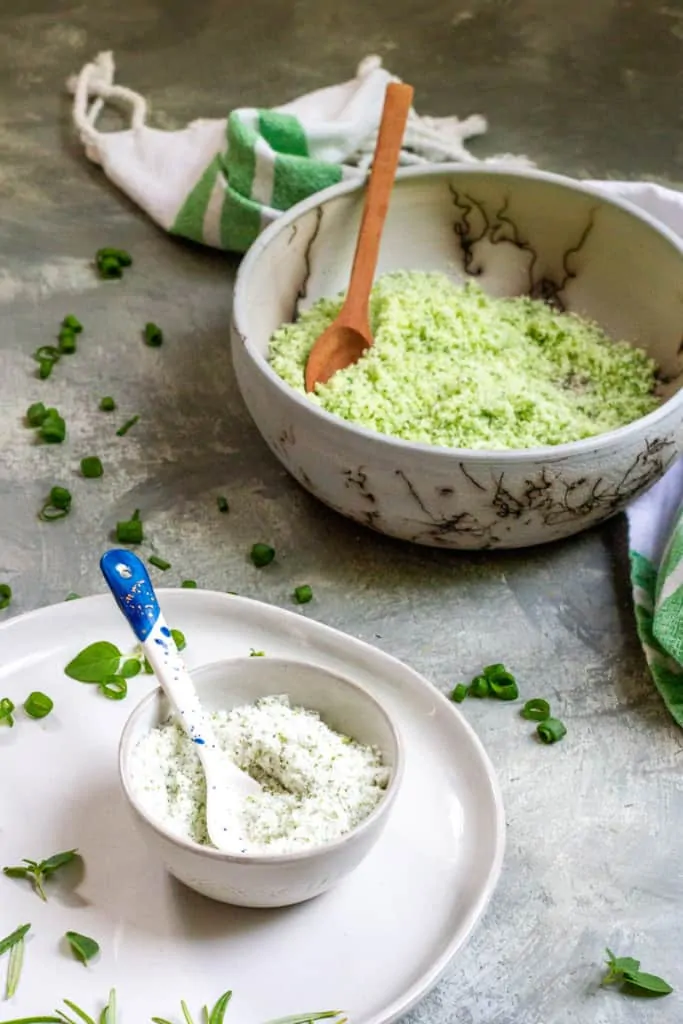
What herbs are growing in your garden this year?
Are they getting bigger and bigger?
Some years, I just can't keep up with all my herbs, and miss out on most of the harvest. This year, I was determined to make each and every herb count.
I've been using herbs in small batches by making syrups, like basil simple syrup, mint simple syrup, lavender simple syrup, and citronella simple syrup.
Those syrups are perfect in drinks (like basil lemonade, mint lemonade, and lavender lemonade), but are also delicious in icy treats like this berry granita.
More recently, I've moved on to preserving herbs in larger batches, such as in this chive butter and this dairy-free basil pesto, and then freezing the butter and pesto for later in the year.
If you follow along with my Instagram stories, you may also have seen me using herb salt on some scrambled eggs.
My first introduction to herb salt was ramp salt from J.Q. Dickinson Salt Works, an artisan salt company in Kanawha County, West Virginia. Back home, their ramp salt was easy to find at my local farmer's market.
Now that I live in Kentucky, I found myself missing easy access to herb salt. And then I realized, I didn't need to miss it.
I could make it.
I thought back to an episode of the (now discontinued) Living Homegrown podcast, and remembered that herb salt is incredibly simple to make at home. All you need are two ingredients: herbs and salt.
What Herbs Can I Use for Herb Salt?
Use hearty, robust herbs like rosemary, oregano, thyme, lavender, chives, mint, or even green onion (which isn't really an herb, but it's close enough).
Avoid very delicate, tender herbs like basil, parsley, and cilantro. These herbs don't keep their flavor well when dried, and after just a few months, your herb salt will likely taste like... regular salt.
If your basil plants are out of control, I recommend making pesto or basil vinegar instead.
What Salt Should I Use?
Use kosher or sea salt.
Do not use iodized salt (or table salt), because the flavor will not be as nice.
How to Make Herb Salt
Start by rinsing and drying your herbs.
If your herbs are large (like long chives or green onions), dice them. If they're attached to a tough stem (like rosemary or oregano), remove them from the thick stem.
Next, add equal parts herbs and salt to a food processor basin.
No food processor? You can also chop the herbs very finely by hand.
If you're shopping for a food processor, I love my KitchenAid 5-cup food processor.
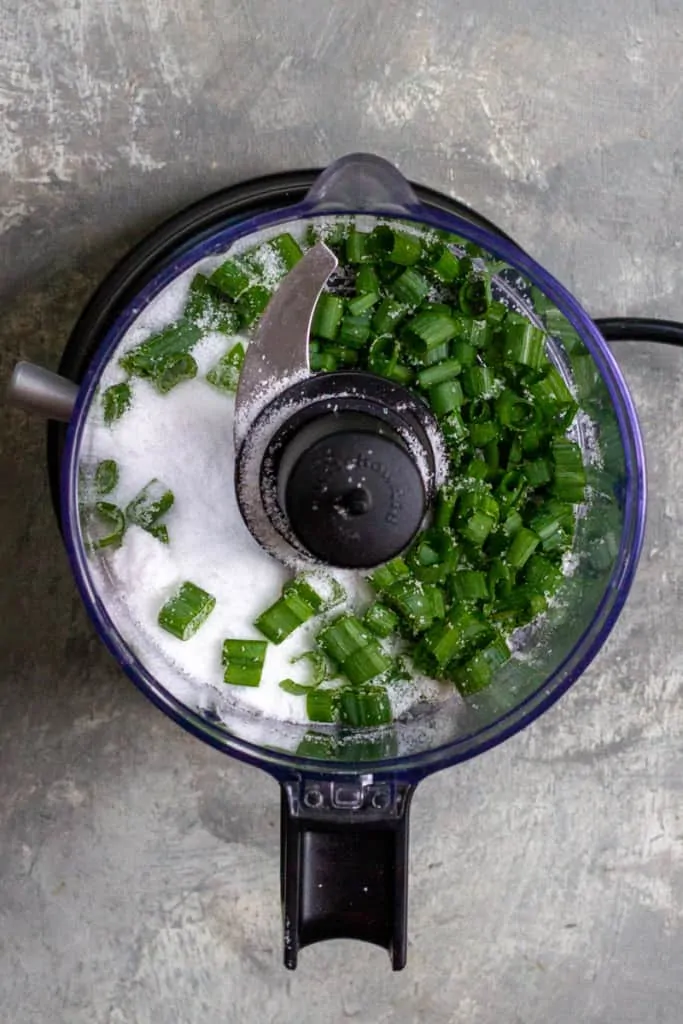
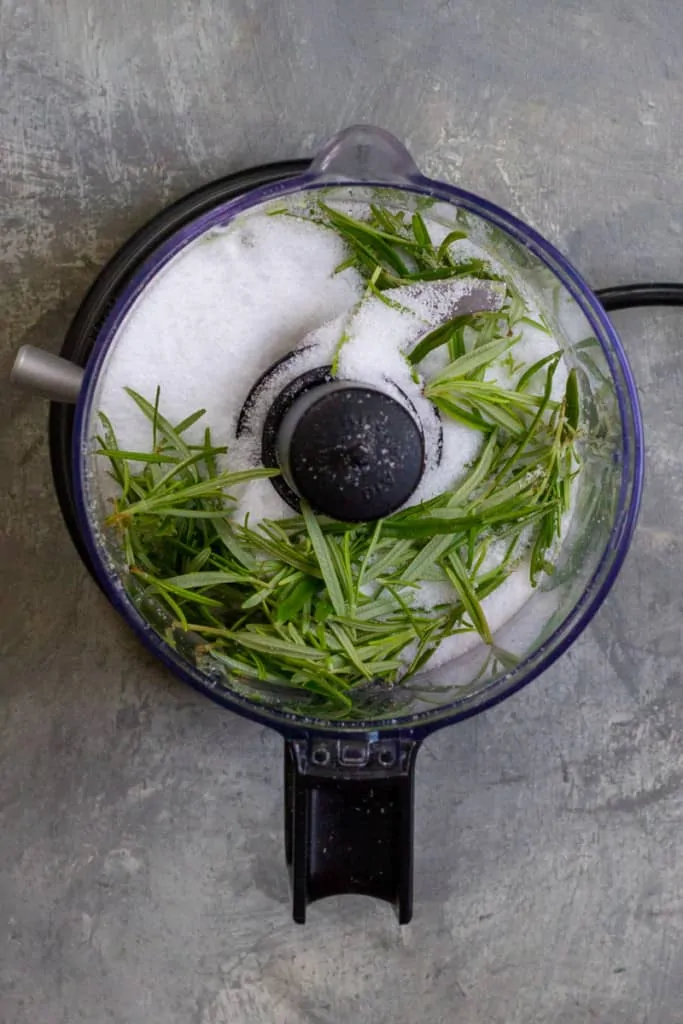
Next, use the chop function on the food processor to finely dice the herbs into the salt.
Stop chopping as soon as the herbs look finely diced; you don't want to form a paste.
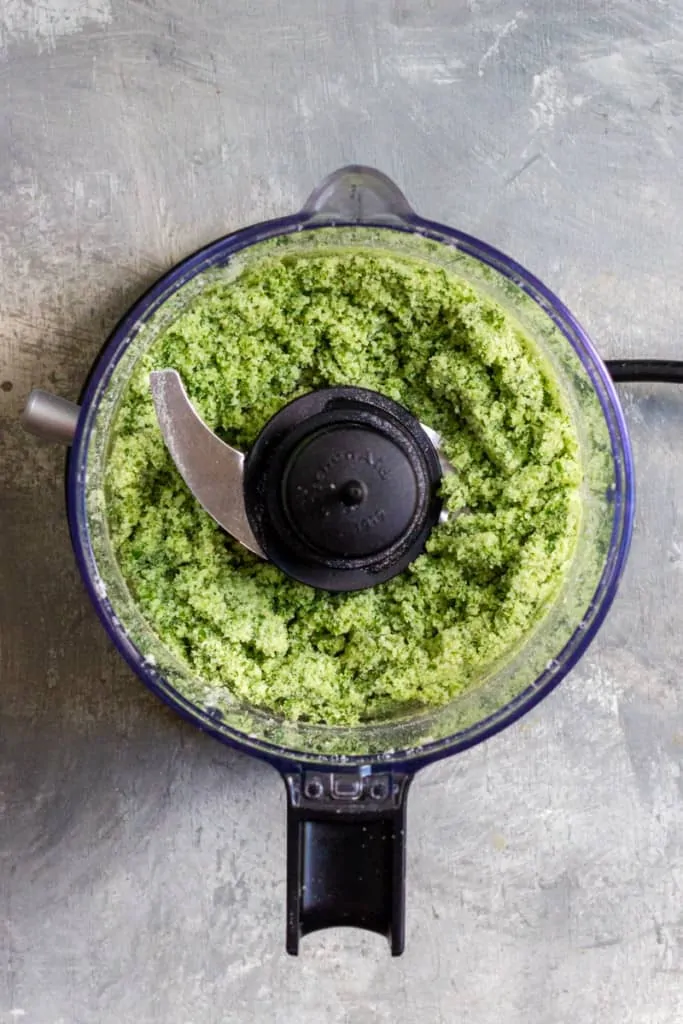
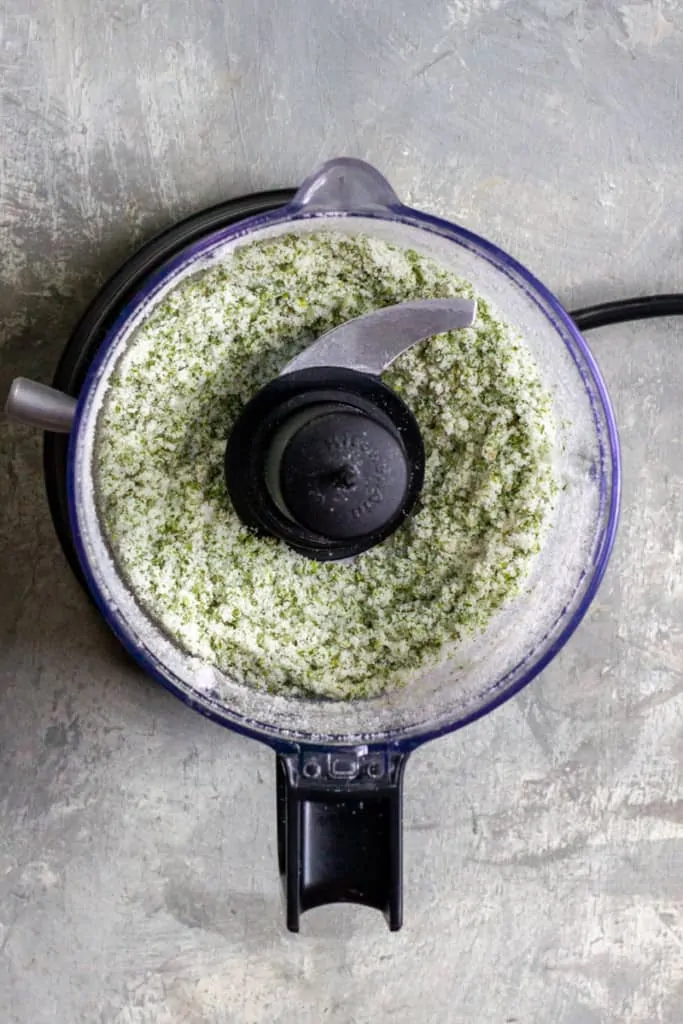
Add more salt to the basin, and chop again to stir.
At this point, the herb salt will be looking extra-gorgeous.
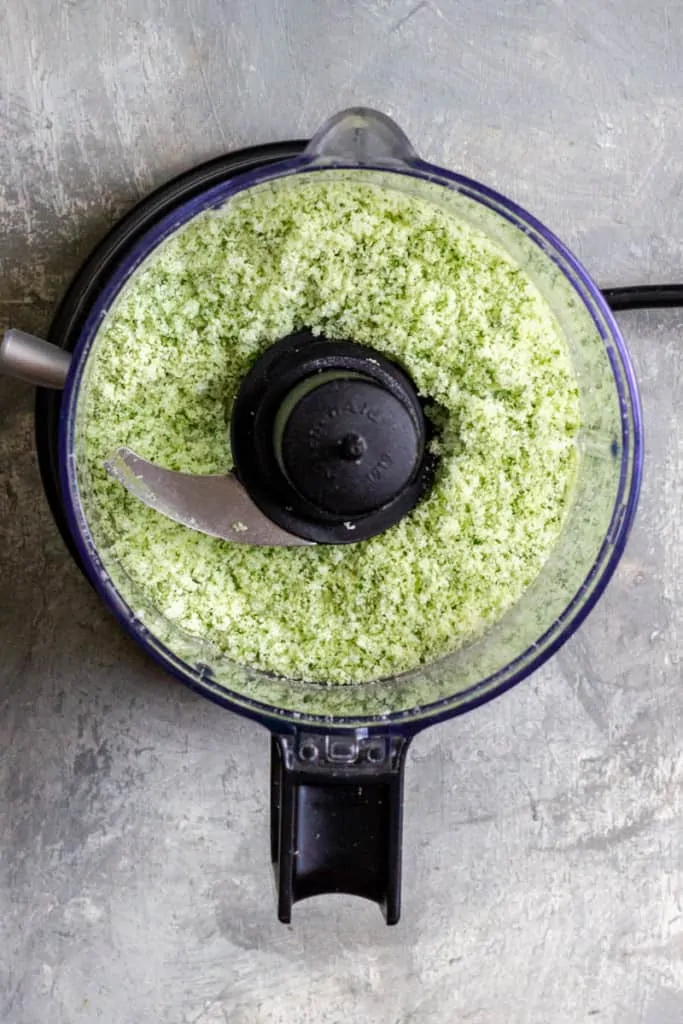
Why Did the Color Fade?
As the herbs dry in the salt, your herb salt will turn from bright and colorful to a more subdued (salt-like) color.
Why?
It's because the salt is drying the herbs, so the color will be less vibrant.
How Can I Use Herb Salt?
This is a finishing salt, so add it to the end of a dish, not the beginning.
If you use this salt along with a lot of heat, it'll be hard to tell the difference between this fancy salt and regular, unflavored salt.
Instead, try sprinkling herb salt on your food right before serving.
It's delicious on eggs (like a mushroom omelette or this masala omelette), sprinkled on potatoes (like these roasted baby potatoes), roasted vegetables, fish or meat, or you can even use it to coat the rim of a margarita glass.
This salt also makes the perfect gift. Simply pour the salt into mini mason jars and spread the herb garden love.
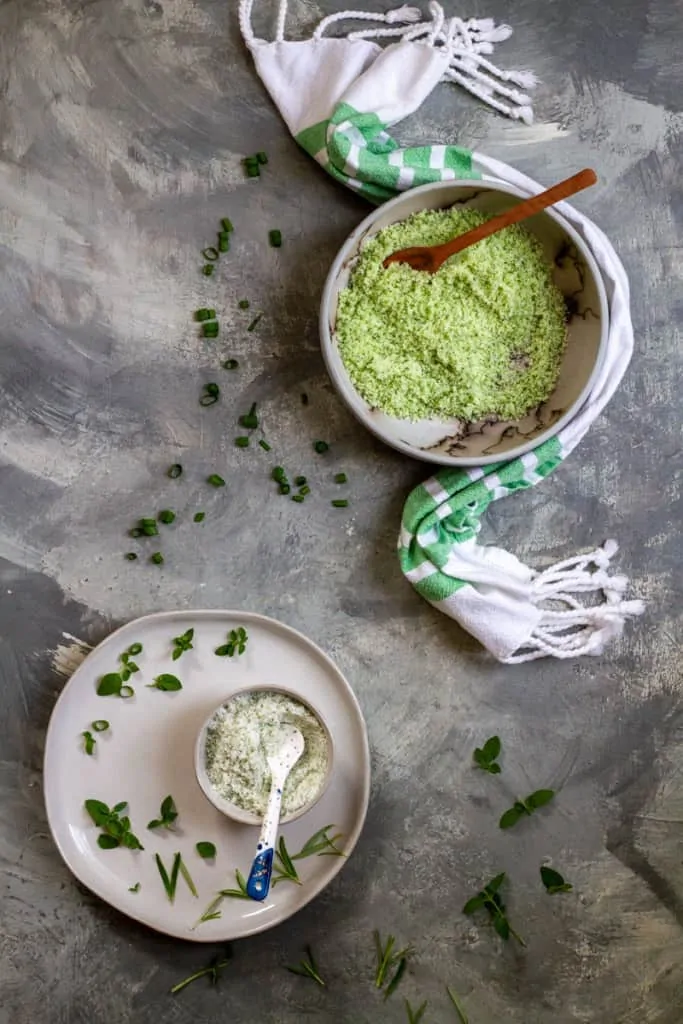
Herb Salt
Equipment
Ingredients
- ½ cup hearty herbs (like rosemary, chives, oregano, or thyme)
- 1 cup coarse sea salt or kosher salt, divided
Instructions
- Remove herbs from tough stems. If using chives, dice into small pieces.Add herbs and ½ cup salt to a food processor basin. Pulse until finely chopped.
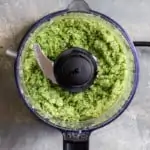
- Add remaining salt, and pulse again to mix.Store salt in a glass jar (or another container) at room temperature. Over the next week, the color from the herbs will fade, but the salt will still be flavorful. The salt will last for years, but the flavor will be best for the first year or so.This salt will be most flavorful when used as a finishing salt at the end of a dish, such as sprinkled over an omelette after cooking.
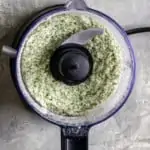

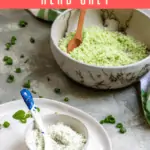
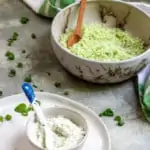
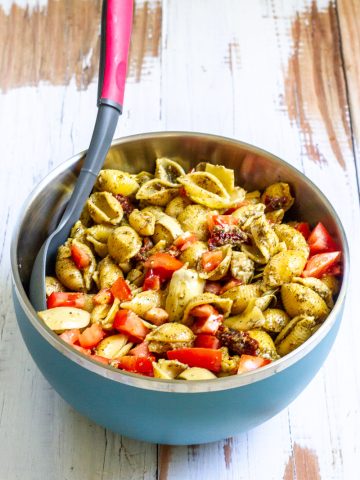
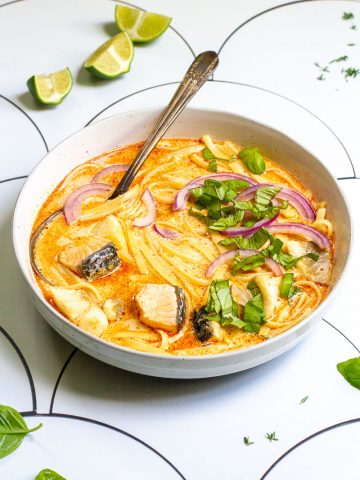
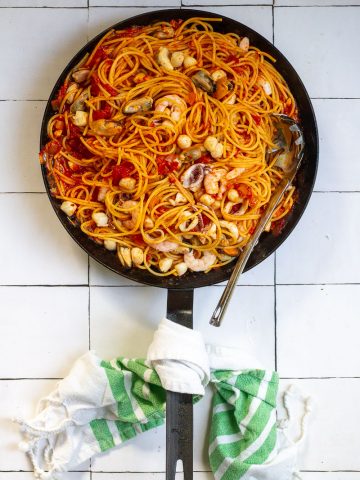
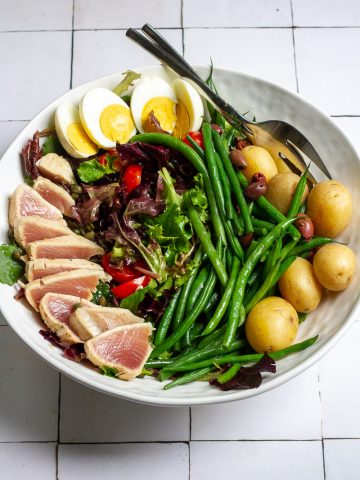
Leave a Comment: